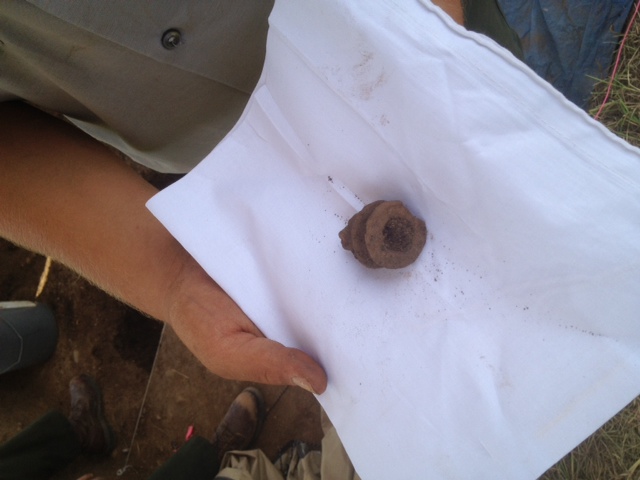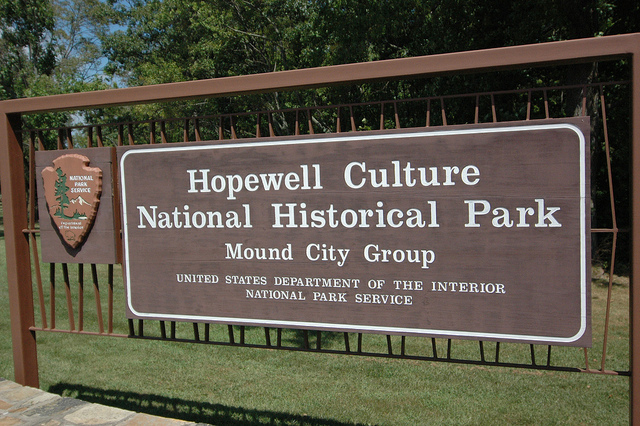
Hopewell Culture has a lot of current research going on. Read on to find out what we've done this summer!
You're driving down State Route 104 on a hot summer day, and just as you pass the entrance to Hopewell Culture National Historical Park, you see a cluster of pop-up tents and several people under them. They all seem to be working hard on something—there are shovels, big metal screens, and more buckets than anyone would know what to do with. Some of them look like little prairie dogs with their heads barely poking up above the ground. So who are they, and what are they doing?
We're the park archaeologists, and we've had a lot going on this summer.
Archaeology, as defined in the dictionary, is "the scientific study of historic or prehistoric peoples and their cultures by analysis of their artifacts, inscriptions, monuments, and other such remains, especially those that have been excavated." In simpler terms, archaeology is the study of the past.
Archaeologists have an endless amount of tricks up their sleeves to create theories about how people lived in the past, but the most concrete method is to dig. Many people don't realize how much history lies just beneath our feet. But archaeologists do—and that allows us to see right into the past!
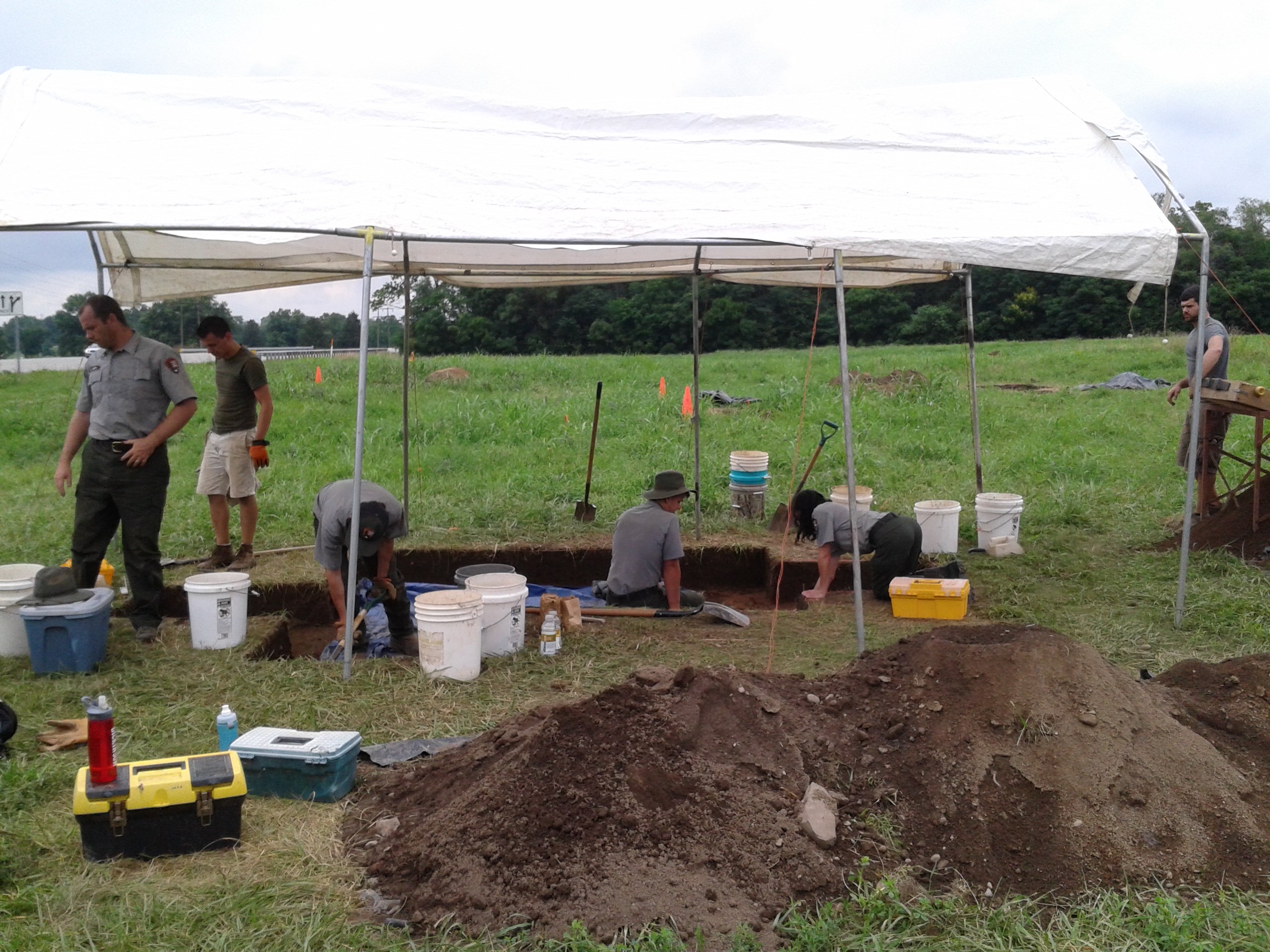
The HOCU crew, along with volunteers, work on the Silt Fence Project, July 2013
-How do we know where to dig?-
There are several ways to find archaeological hot spots. The easiest way is called a surface survey. Its name says it all: archaeologists simply walk across the ground, separated by a preset interval of space (like one meter), and look for artifacts on the surface. Sometimes this can prove to be very useful, but other times the artifacts are too far below the surface for the survey to work.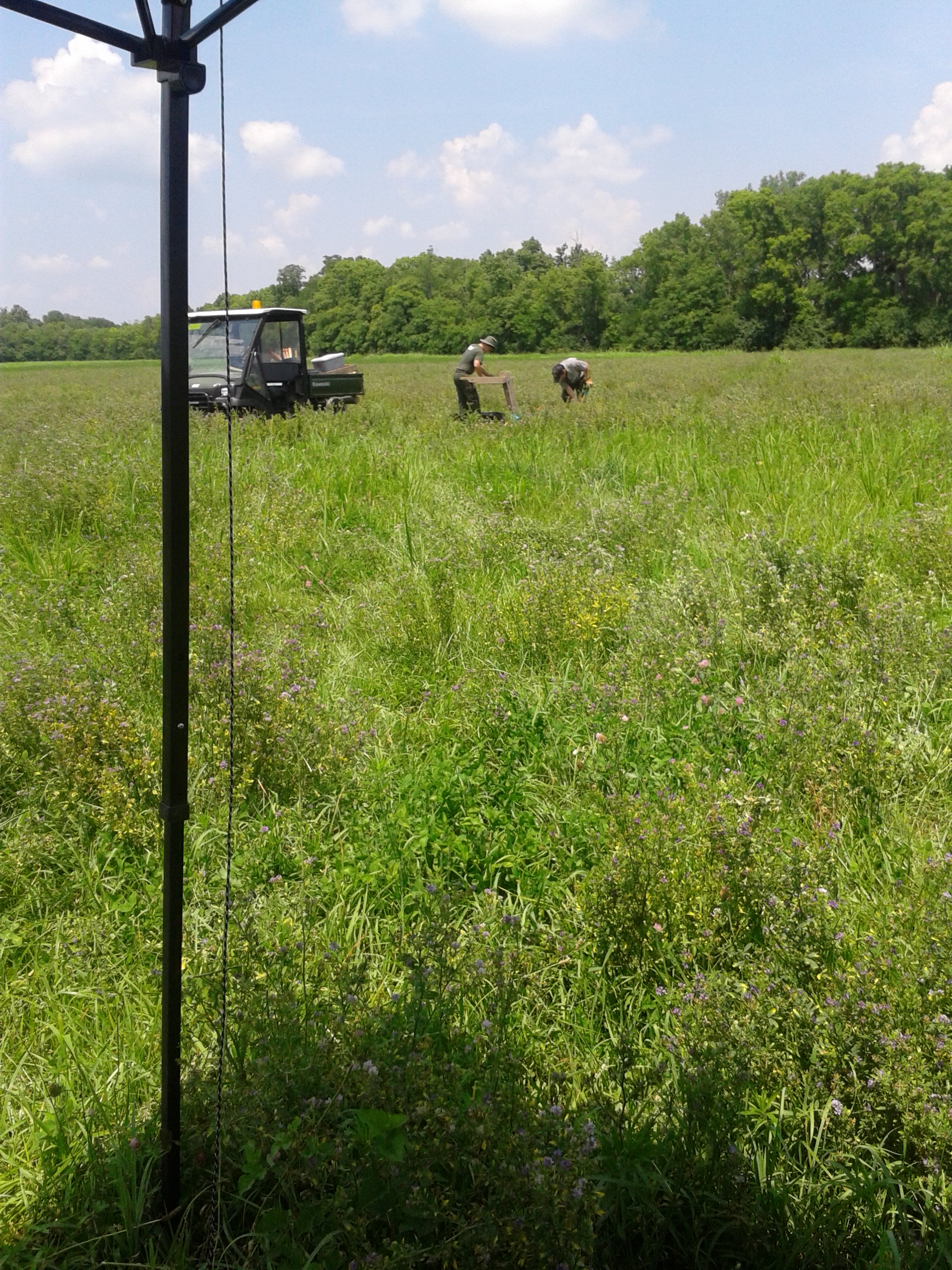
Archaeologists performing shovel tests on the North 40, July 2013
Another extremely helpful tool for archaeologists is remote sensing. One technique is magnetometry. A magnetometer is a sensitive instrument that can detect slight disturbances in the earth's magnetic field. These disturbances, or anomalies, can be caused by highly magnetic iron objects like nails, but they can also be caused by iron-rich soils or clays that have been heated in the past. So a magnetic survey can even detect places where fires were built for cooking or heating in the ancient past. Eventually, the device's readings will be placed on a map of the recorded area. Dark splotches represent magnetic anomalies (which often means areas that should be dug!).
Finally, the best way to test the magnetic anomalies and the areas around them is to conduct shovel tests. While the procedure varies for shovel tests from site to site, at Hopewell Culture we dig 50 by 50 centimeter holes 30 centimeters below the surface, or until we hit the subsoil (a more orange-ish and clayey soil found beneath the darker, siltier plow zone). Often, shovel tests are unproductive and produce very little artifacts. But sometimes, shovel tests expose entire sites—like the historic cellar site on the North 40.
Click on one of the following links to see what's been happening at HOCU this summer.
The George Shriver Homestead
Hopewell Features at 33RO338
The George Shriver Homestead
On the northernmost end of the North 40 is a plot of land that was purchased by Chillicothe local George Shriver in 1832. There was most likely a house there, but there is no documented evidence of any structures on the land until the 1875. This gap in documentation is just the kind of thing that gets archaeologists excited—especially when you pair it with strong magnetic anomalies in the area.So, beginning in early June of 2013, park archaeologists worked alongside the folks at the Midwestern Archeological Center in Lincoln, Nebraska to find out what George Shriver left on his land almost two hundred years ago. We started by digging shovel tests on a 10 by 10 meter grid. Some told us nothing, but others painted a much larger picture. Pieces of historic ceramics, brick, glass, and even some bullet casings from the Camp Sherman era told us that we were definitely in the right spot.
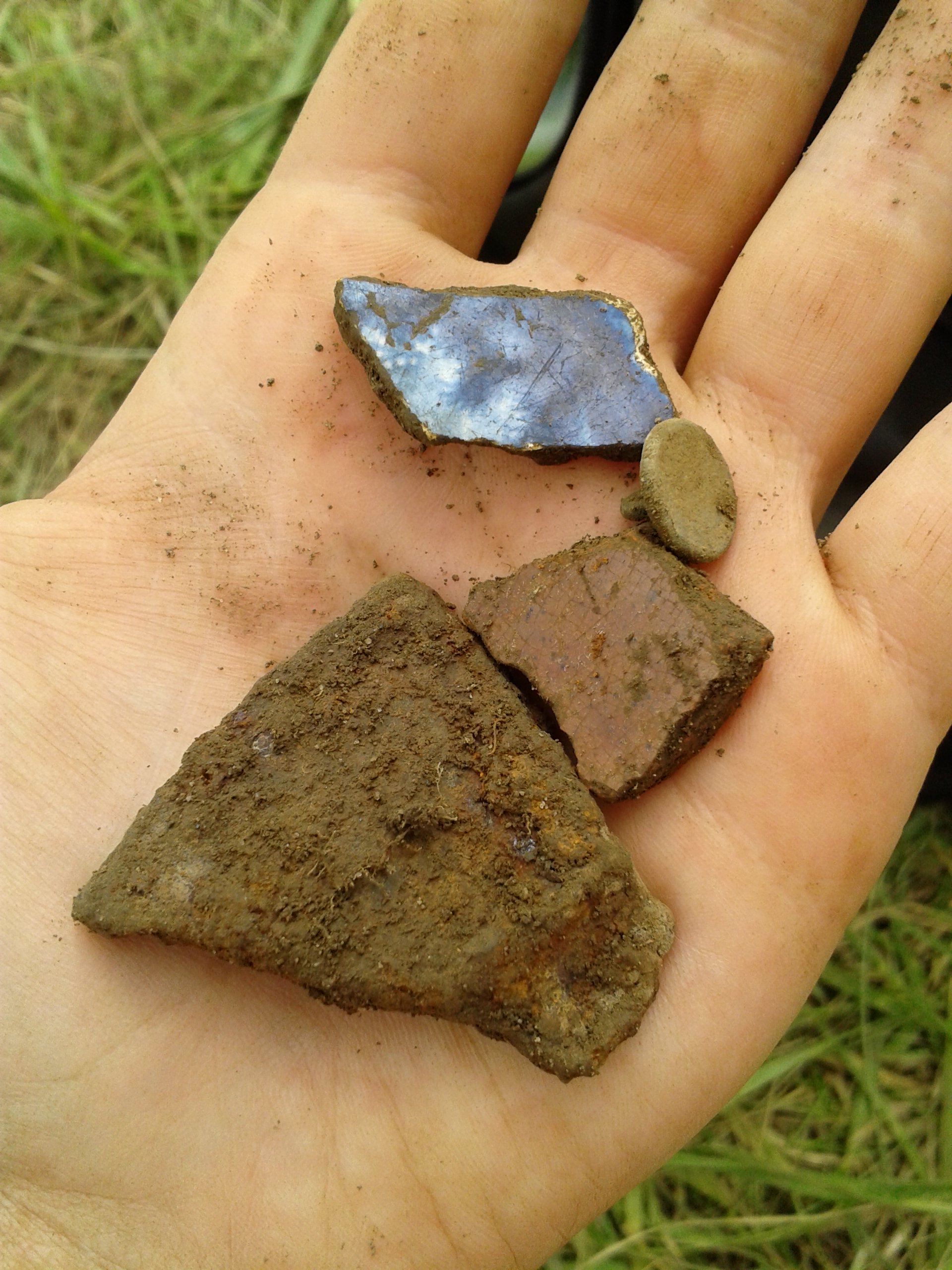 .
.
A collection of artifacts found during excavation: a piece of blue ceramic, a button, a redware fragment, and a piece of metal
One shovel test in particular caught our attention. On the southwestern edge of the shovel test grid, one test pit showed a much higher artifact density than any other. Artifacts popped out of nearly every shovel-full. Eager to find out more, we opened larger units around the test pit…which eventually became thirteen 1 by 1 meter units! Not only did we find thousands of wonderful artifacts within those units, but we also uncovered a large feature (or a change in soil color caused by cultural modification) that looked like it could have been a cellar.
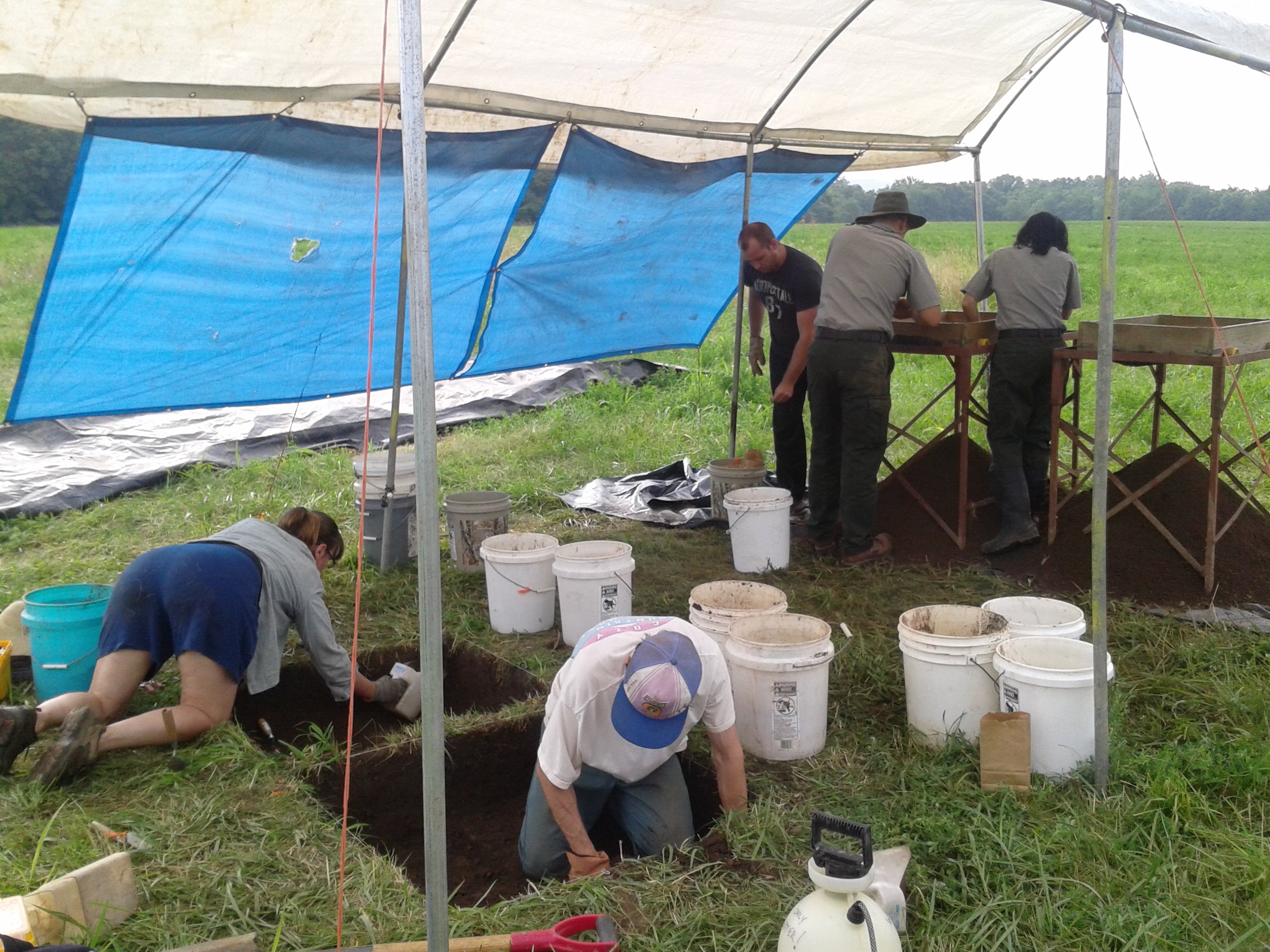
The first two units of the possible cellar feature
After countless hours of digging and analyzing, the mysterious feature remains just that: a mystery. It is possible that it was a cellar, but we can't be sure. Regardless, the site gave us plenty to look at and think about! (To learn more about the Midwestern Archeological Center, click here: https://www.nps.gov/mwac.)
Hopewell Features at 33RO338
Beginning in 2007, magnetic surveys done on the southern end of the North 40 revealed some amazing prehistoric finds. The field was littered with prehistoric pit features, all surrounding a giant wooden structure—a rectangular building measuring nearly 18 meters on a side! Our goal in 2013 was to map the distribution of artifacts in the plowzone, and also to sample the contents of one of the pit features through excavation. Our first order of business was to conduct more shovel tests, and then we moved on to the feature.The trouble excavating areas that have already been dug is finding the exact location of the unit. We came pretty close, but as we dug farther in to the plow zone, we started to realize we were off by just a bit. We continued on, but opened another unit to the east—a little closer to the original unit. We reopened the feature, and what we found inside was positively thrilling…
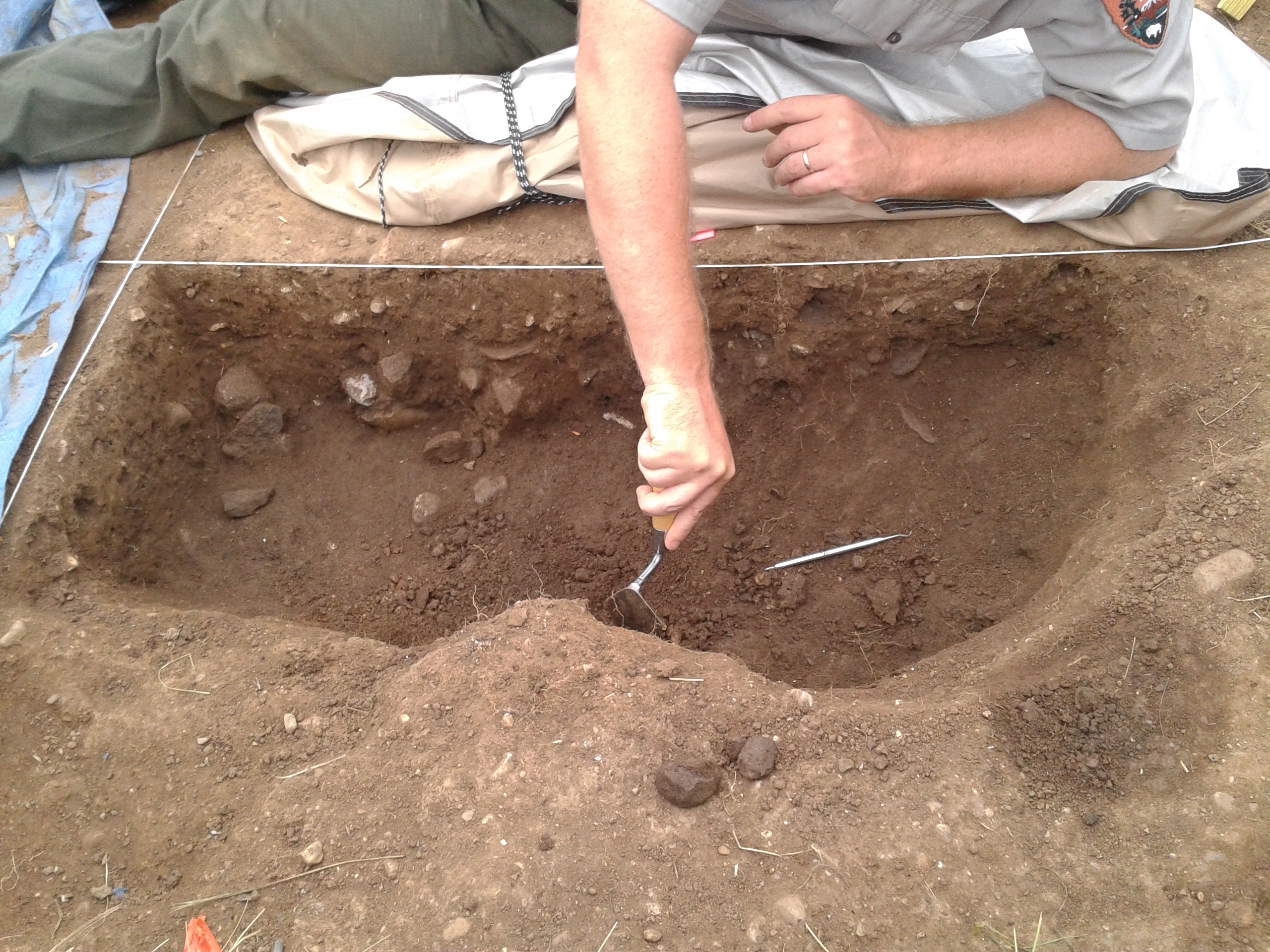
Archaeologist Jason Smith carefully excavates the Hopewell pit feature at 33RO338
From the very beginning, the feature offered exciting finds. Bladelets (broken pieces of knife-like tools), pieces of pottery, even whole points came from within the boundaries of the feature. As we dug down further, we found that the feature was lined with burnt rocks—often a signature of earth ovens! But the most fascinating piece of all was found around 60 centimeters below the surface: a fragment of a ceramic smoking pipe.
Ceramic smoking pipe found within the Hopewell pit - the first of its kind found since the 1920s!
Hopewell features hardly ever disappoint, and this year's certainly did not!

